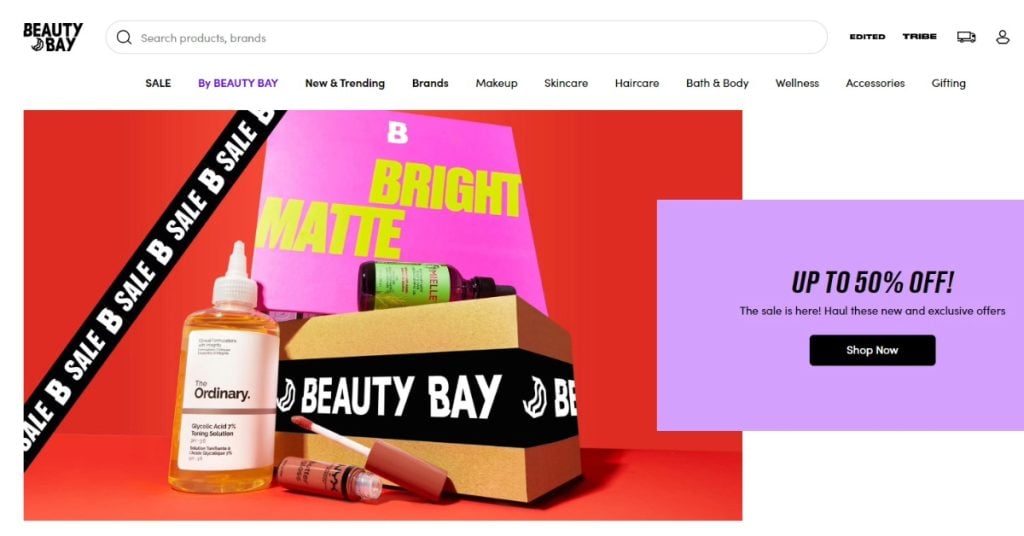
Beauty Bay marketplace case study: book a demo to start yours
Beauty Bay is a UK-based online store that specializes in beauty and cosmetics, providing an extensive selection of makeup, skincare, and haircare items from a range of well-known and unique brands. If you’d like to start your own marketplace like Beauty Bay, you’re facing a buy vs build decision. So before you decide to build it in-house on top of Spree open-source, consider using the feature-rich Enterprise Edition cutting your time-to-market to a few weeks.
Build vs Buy a marketplace?
Open-source offers many benefits, including full ownership and the ability to tailor freely, but these come at a price. The process of developing a complete marketplace solution is both time-intensive and costly, typically requiring several months or even years. This understanding is based on our experiences with a range of marketplace initiatives.
Unless you have a significant amount of funding, it’s generally more advantageous to use a ready-made, all-in-one marketplace solution like Vendo, as suggested by an expert who has long charged for marketplace development work.
Back to the Beauty Bay marketplace case study
Beauty Bay, established in 1999 in the United Kingdom, began its journey as a small beauty retail outlet and evolved into a dominant online marketplace catering to global beauty enthusiasts by 2005. As a multi-vendor platform, it offers a vast array of cosmetics, skincare, haircare, and other beauty accessories, positioning itself as a one-stop-shop for diverse beauty needs.
The website’s user-friendly design, coupled with an extensive product selection ranging from budget-friendly to luxury brands, plays a pivotal role in its success. Real customer reviews and ratings, along with global shipping options, have also contributed to its appeal among customers worldwide.
Financially, Beauty Bay has shown remarkable performance, particularly highlighted in the pre-Covid-19 period, with a reported profit of £4.4m for the 12 months leading up to March 31, 2020. This was a significant increase from £917,866 in the previous year. Despite a slight decrease in turnover from £87.7m to £82.2m, the company maintained a strategic focus on profitability by optimizing trading margins.
Beauty Bay’s journey from a local store to a global online marketplace is a testament to adaptability and customer-centric approach. By focusing on diversity, user experience, and strategic growth, Beauty Bay demonstrates a business model that leverages digital innovation and market understanding to sustain its growth and market presence. For those aspiring to replicate its success, the key lessons are in its commitment to a broad product range, responsive website design, active customer feedback mechanisms, and a robust digital infrastructure that adapts to changing market conditions.
How to emulate Beauty Bay marketplace success?
For a success like Beauty Bay’s, it’s recommended to initiate your marketplace quickly, in just a few weeks instead of months. Evaluate the suitability of your products for your audience and refine your customer acquisition strategies based on real-world insights.
Test the market before going all in on building it.
Here’s how to get started:
- Book a marketplace demo call: We’ll help you evaluate Spree for your marketplace needs and get started with the Enterprise Edition
- Customize your Storefront: Use the drag & drop page builder or custom CSS
- Onboard Brands: Invite your brands or choose brands from our catalog
- Select Products: Curate products and collections manually or automate it
- Embed products: Make your content, newsletters, social media shoppable
- Get Paid: Get paid as soon as products are shipped by the brands
- End-to-end automation: Brands sync, fulfillment, payouts, invoicing, taxes
When you’ve tried all that and it works, start thinking about building your own, custom-made marketplace project based on Spree Commerce. First, by decoupling the storefront and going headless with marketplace API, and later with your own backend, if you decide you really need it. Just lift and shift the storefront.
Nobody has to know what’s under the hood, right?



